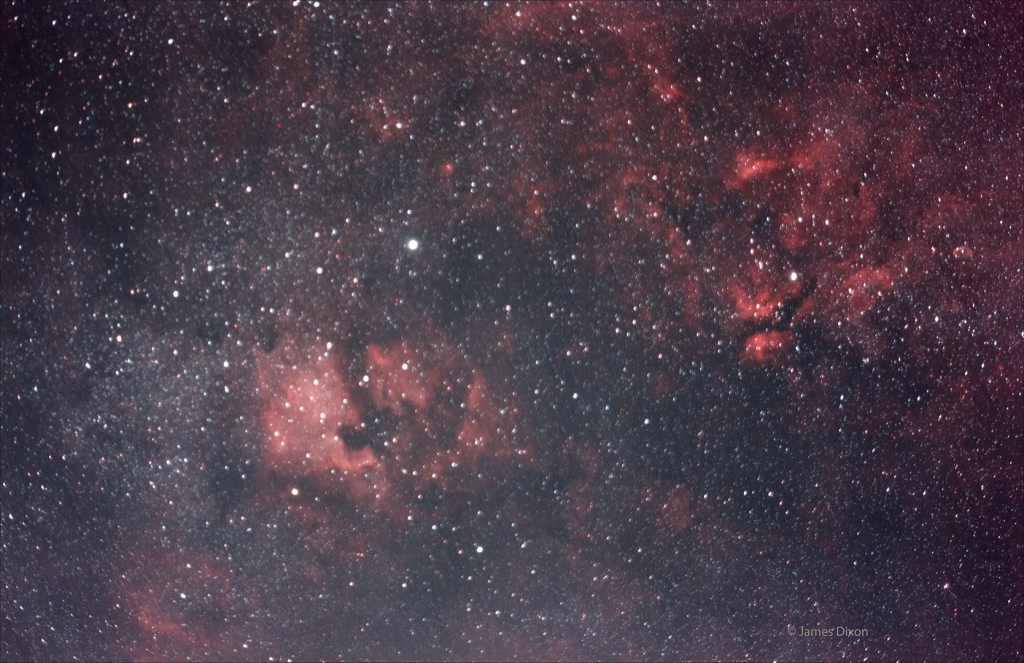
Here is something I worked on Saturday night at the River Ridge Observatory. It is the first light image of my full spectrum modified Canon T5i DSLR. The camera can now detect infrared and ultraviolet in addition to visible light. I will use it primarily for astrophotography but have always wanted to try the other two out. Because it is full spectrum, I will always have to use one filter or another or else it would be overwhelmed. Last night I used the same Optolong L’eNhance dual narrowband that I use for a lot of images. 90 two minute images went into this. I ran it until the battery ran out. I used my kit 70-300mm zoom lens at 70mm and f/4.So what we have here is part of Cygnus the Swan. in the lower left are the North America and Pelican Nebulae. Above them, the bright star is Deneb (tail of the swan). Over to the right and a little lower, is the star Sadr, which is the “intersection” of the swan with wings on either side, tail behind (no pun intended) and head the other way. Sadr has it’s own molecular cloud complex. All the red is ionized hydrogen glowing from the heat of nearby stars.A lot of room for improvement, for example I should have shot at f/5.6 to reduce coma and ISO 800 instead of 1600. Supposedly this camera is best for astrophotography at 800 rather than some lower ISO.
